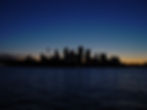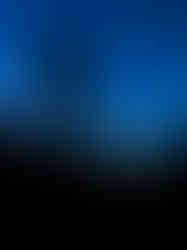Blue Hour Photography: Settings, Ideas, and Timing
- Aug 22, 2025
- 5 min read
Updated: Dec 10, 2025
If you love moody color and clean, even light, blue hour photography is your sweet spot. Below you’ll find what blue hour is, exactly when it happens, the settings that just work, plus creative blue hour photography techniques for landscapes, cityscapes, and portraits.
What is blue hour in photography?
Blue hour is the short window before sunrise and after sunset when the sun sits below the horizon and the sky shifts to deep, saturated blues. There’s no official standard, but you can think of it as the overlap between late civil twilight and early nautical twilight - commonly when the sun is about 4°- 8° below the horizon. In other words, it often spans the tail end of civil twilight (0° to -6°) and the start of nautical twilight (-6° to -12°).
The blue hour is the short period of twilight just after sunset and before sunrise when the sun is far enough below the horizon that its direct light is gone, and the sky takes on a deep, saturated blue color.
How long is it? It depends on season and latitude. Around the equator, blue hour can be ~16 minutes; at ~40° latitude (e.g., New York or Wellington) about 20 minutes; near 60° (Oslo) roughly 30 minutes- and in polar regions during winter, it can last much longer.
Timing: how to catch it, exactly
Plan with tools. Use Timeanddate’s Sun Calculator to see when the sun hits those critical angles at your location, or an app like PhotoPills (Planner → Panel 6) that shows start/end times for the blue hour in photography on any date.
Know the windows:
Evening: start shooting when the sky deepens and city/house lights switch on;
Morning: arrive 45-60 minutes before sunrise so you’re ready when the sky turns blue.
Blue hour photography settings: Dial‑in settings that work (and why)
Below are starting points- adjust for your scene and histogram. Shoot RAW and enable exposure bracketing when in doubt.
Blue hour landscape photography
Tripod + remote or 2‑sec timer (essential for long exposures). Turn off lens/body stabilization on a locked tripod to prevent micro‑shake.
Aperture: f/8-f/11 for depth and lens sharpness.
ISO: 100-200 (raise only if wind or moving subjects demand it).
Shutter: typically 1-30s; go longer for glassy water or cloud motion.
Focus: use manual focus with magnified live view, or set hyperfocal distance for edge‑to‑edge sharpness.
White balance: set Kelvin ~4000-5000 K to preserve cool blues (tweak as the sky darkens).
Why it works: Low ISO keeps noise down; longer shutters let the scene “soak up” the subtle ambient. The Kelvin WB keeps that signature blue instead of letting Auto WB neutralize it.

Cityscapes & architecture
Aperture: f/8-f/16 if you want starbursts on streetlights.
ISO: 100-400.
Timing tip: The sweet moment is when building/street lights are on and the sky is still blue - contrast between warm lights and cool sky makes the scene pop.
People & portraits at blue hour
Ambient + flash, balanced. First expose for the background (sky/city) about -1 EV (Exposure Value) darker than “correct,” then add a small off‑camera flash.
WB/gel trick: Set camera WB (White Balance) to Tungsten (~3200 K) to push the environment bluer, then put a CTO (Color Temperature Orange) gel on your flash so skin tones stay natural. This is a classic way to get that cinematic blue‑and‑amber look.
Shutter: “drag the shutter” (use slower speeds under your sync limit) to let ambient bleed in, then control subject brightness with flash power/TTL.
Trend note: Blue‑hour portraits are a growing 2025 wedding trend thanks to the flattering, editorial mood-worth pitching to clients.
Blue hour photography tips and techniques (field‑tested)
Bracket exposures when there’s glow on the horizon and deep shadows elsewhere; blend later for natural tonality.
Smooth water & clouds with multi‑second shutters; reflections boost color and simplify composition.
Chase warm-cool contrast. Position warm lamps/windows against that cobalt sky for easy color harmony.
Mind Auto WB. Auto often neutralizes the blue; use Kelvin or a cooler preset and fine‑tune in RAW.
Watch the histogram. Don’t clip shadows; expose so the mid‑tones carry detail, then lift selectively in post (RAW helps).
Stability matters. Lock the tripod, disable stabilization on tripod, use a remote/timer, and shield the rig from wind.
Start earlier than you think. Light changes fast; be in place and set up before the window opens.
Ideas you can shoot this week
Bridges & waterfronts (mirror‑like reflections, warm lights on cool sky).
Old towns/monuments with tungsten or warm LED lighting.
Mountain skylines with the last belt of color on the horizon.
Traffic trails from overpasses to add energy to a static skyline.
Blue hour portraits with the CTO/Tungsten trick for dramatic color contrast.
Blue hour vs golden hour photography
Here’s a quick cheat sheet comparing blue hour photography and golden hour photography so you can pick the right look for the shot.
Aspect | Blue hour | Golden hour |
When it happens | Shortly before sunrise and after sunset during the darker stages of twilight. | Shortly after sunrise and before sunset when the sun is close to the horizon. |
Sun position (approx.) | Sun ~ 4° to 8° below the horizon (spans late civil + early nautical twilight). | Sun ~ 6° below to 6° above the horizon. |
Duration (typical examples) | Varies with season/latitude: around 16 min near the equator, ~20 min at ~40°, ~30 min at ~60°. Can last much longer in polar winter. | Also varies: roughly ~50 min near the equator, ~1 hour at ~40°, 90+ min at ~60°. In polar summer it can last all night. |
Color & mood | Cool, saturated blues; calm and cinematic. Blue dominates as red light is absorbed higher in the atmosphere. | Warm golden/orange light; soft, flattering, directional. Extra atmosphere scatters blue/violet light. |
Contrast | Generally low to moderate contrast, especially before city lights fully switch on. | Moderate contrast with long shadows; still softer than midday. |
Best subjects | Cityscapes, architecture, bridges, monuments; landscapes with lights or reflections; creative portraits with added light. | Portraits, landscapes, cityscapes, backlit scenes, rim‑light details. |
FAQ
Is blue hour actually an hour?
Not usually. It’s often 15–30 minutes depending on season and latitude; shorter near the equator, longer toward the poles.
How do I find the timing for my city?
Check Timeanddate’s Sun Calculator (watch when the sun is between ~-4° and -8°) or PhotoPills Panel 6 for exact photography blue hour start/end times.
What white balance should I use?
Manual Kelvin around 4000-5000 K is a reliable starting point; go cooler as it gets darker. Shoot RAW so you can refine in post.
Best starter settings?
Tripod scenes: f/8-11, ISO 100-200, shutter 1-30 s. Handheld or portraits: raise ISO, open to f/2.8-4, add balanced flash if needed.
What's the difference between the golden hour and the blue hour?
The golden hour is the period right after sunrise and before sunset, characterized by soft, warm, golden light. The blue hour is the short period right before sunrise and after sunset, defined by its cool, saturated blue light.
What is golden hour vs blue hour?
Golden hour light is warm, soft, and creates long shadows, giving photos a cozy feel. Blue hour light is cool and even, creating a moody, cinematic look where artificial lights begin to stand out against a deep blue sky.
Is photographing in blue hour nice?
Yes, it's a favorite for many photographers! Blue hour provides a unique balance of light, making it ideal for capturing moody cityscapes, dramatic landscapes, and portraits with a cool, flattering light. The contrast between warm artificial lights and the deep blue sky is especially beautiful.












